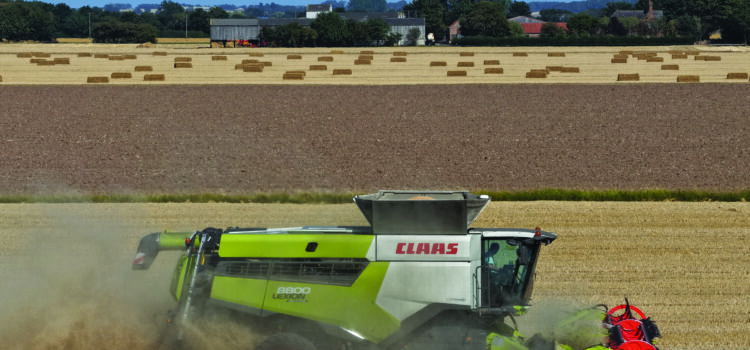


Final estimates for this year’s wheat harvest remain unknown because of huge yield differences between farms, say analysts.
“The wheat harvest has had arguably the greatest level of variation so far,” says the latest official harvest progress report – published on 22 August by the Agriculture and Horticulture Development Board.
“There is significant variation in yield between and within farms, regions and across the UK – which means this survey is unlikely to reflect all individual farm circumstances,” says AHDB senior analyst Helen Plant.
“The combination of lower yields for many growers and falling grain prices throughout the year points to significant financial challenges for arable farms.”
‘Worst years’
Many farms in the survey – including those in East Anglia and the Midlands, have had some of the worst years on recent record. But participants fared better in Scotland, south-east England, the West country and Wales.
Some 30% of the farms in the survey are down on yield by 10% or more against their five-year average. The lowest reported during the survey is a 29% decline against the farms’ five-year average wheat yield..
National picture
“With some yield assessments still to be made, final yields are not yet known. This variability makes it particularly challenging to draw national and regional pictures about yields.”
The survey puts average UK wheat yields at 7.3t/ha – 5.4% below the five-year average. But that includes the challenging years of 2020 and 2024. A longer view suggests yields are 9.1% below the 10-year average.
Similarly, average oat yields are 10% below the five-year average and 13% below the 10-year average.After some promising early reports, the average spring barley yield is just 1% above both the five-year and ten-year averages, but with significant variation.
Variability in quality for oats and spring barley has also increased as harvest has progressed north. While winter oat quality has generally been good, spring oats have struggled more, with both lower yields and specific weights reported by growers.
The significant variation in yield driven by many factors, says the AHDB. These include the availability of moisture throughout the growing season, changes in cultivations and changes in grassweed pressures.
Grain weight relative to grain volume is also an important consideration. Specific weights this year are very good so far, says the AHDB.
This is leading to smaller, heavier grain heaps in some cases.

